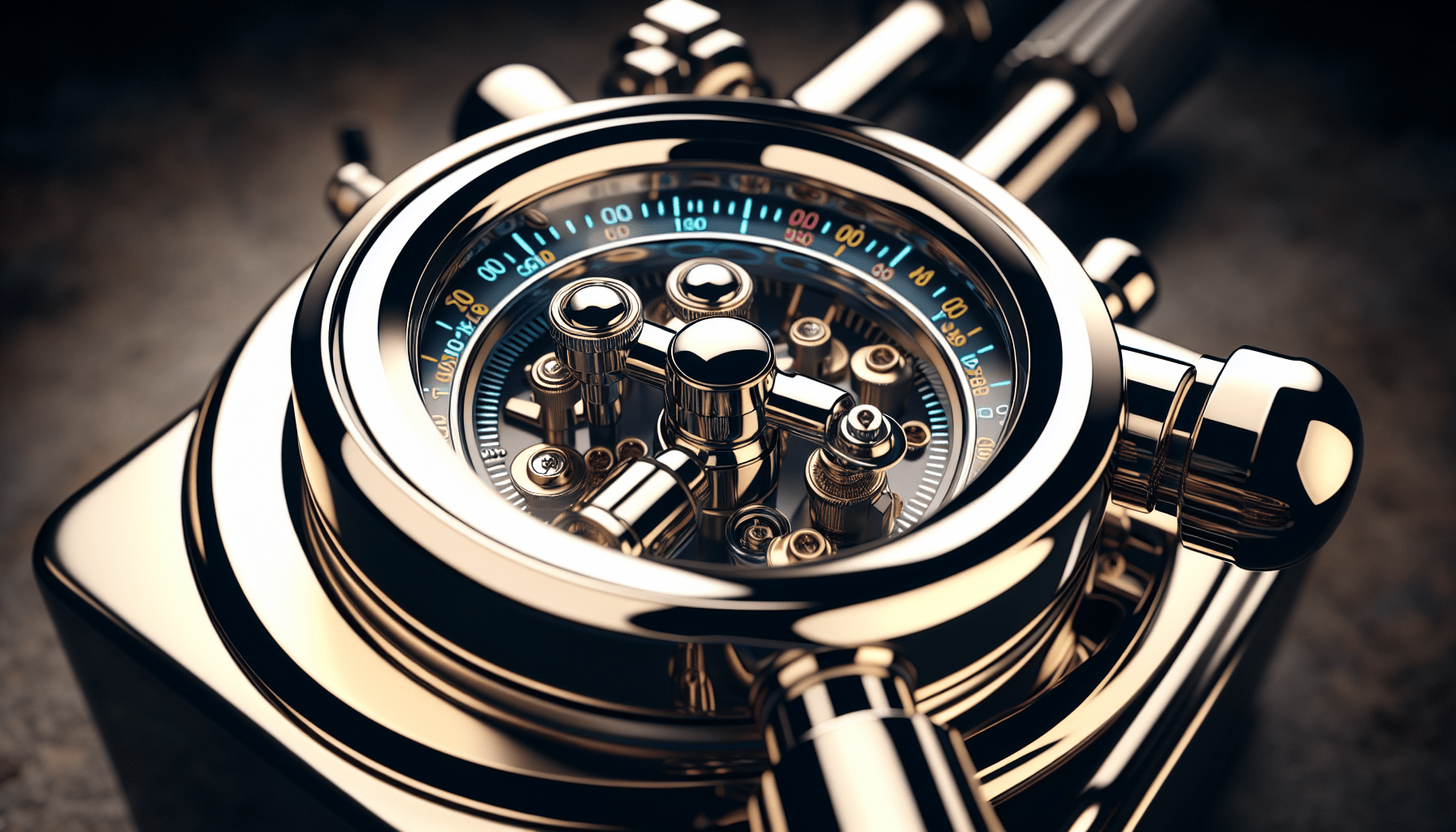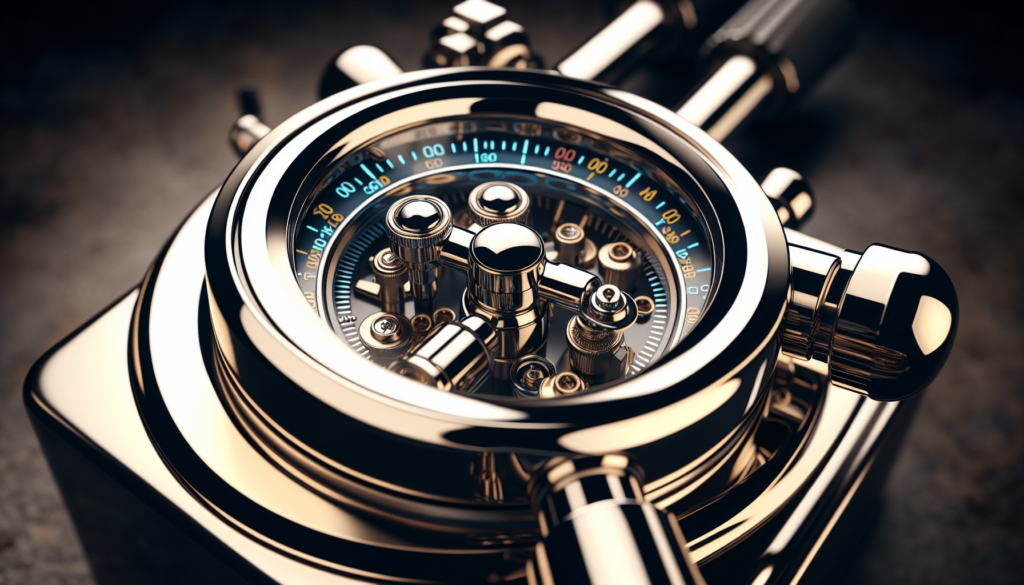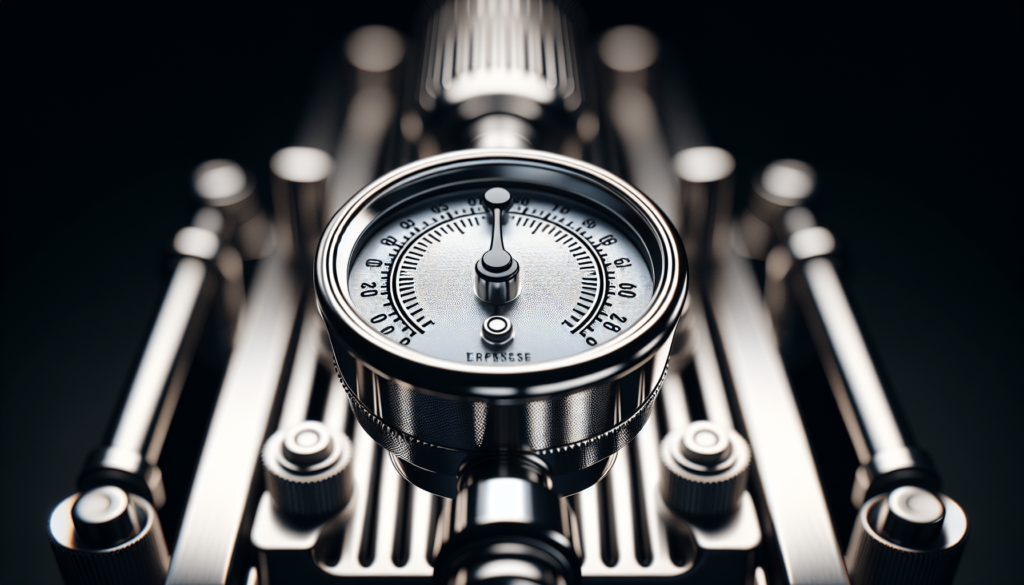
In the world of espresso, achieving the perfect brew is a delicate art. A pivotal component in this process lies in the role of pressure gauges, which act as the guiding force behind a quality cup of joe. These instruments, often overlooked yet essential, possess the power to refine and enhance every shot extracted from an espresso machine. In this article, we will explore the significance of pressure gauges in the pursuit of coffee perfection, unraveling their ins and outs to help you elevate your brewing skills and master the art of espresso.

What is a Pressure Gauge?
A pressure gauge is a device used in espresso machines to measure the pressure exerted by the water during the brewing process. It provides valuable information to baristas and coffee enthusiasts, allowing them to finely control and optimize the extraction. A pressure gauge is essential for achieving consistent brewing parameters, ensuring a controlled extraction process, and ultimately, improving the quality and taste of espresso.
How Pressure Gauges Work
Pressure gauges work based on the principles of pressure measurement. They incorporate various components that allow for accurate and reliable readings. The key principle behind pressure measurement is the conversion of pressure into a measurable mechanical force. This force is then transmitted to the gauge through a fluid or mechanical system, which translates it into a visual indication of pressure on the gauge’s display. These components include a sensing element, which senses the pressure, and a mechanism that converts the pressure into a visible reading on the gauge.
Types of Pressure Gauges
There are two primary types of pressure gauges commonly used in espresso machines: analog and digital pressure gauges. Analog pressure gauges consist of a dial with a needle that moves across a scale to indicate the pressure. They are simple, reliable, and provide a visual representation of the pressure. Digital pressure gauges, on the other hand, utilize electronic sensors to measure the pressure and display it digitally. They offer precise readings and may come with additional features such as pressure profiling capabilities.

Choosing the Right Pressure Gauge
When selecting a pressure gauge for your espresso machine, several factors should be considered. Accuracy and precision are crucial, as they ensure that the gauge provides reliable readings for precise control of the brewing process. Additionally, the durability and reliability of the gauge are important, as espresso environments can be demanding. The gauge should be able to withstand high temperatures, pressure, and continuous use. Lastly, compatibility with espresso machines is vital to ensure proper installation and integration with the brewing system.
Benefits of Using Pressure Gauges in Espresso Machines
Using pressure gauges in espresso machines offers a multitude of benefits for both professional baristas and home coffee enthusiasts. One of the primary advantages is the ability to maintain consistent brewing parameters. Pressure gauges allow for precise control and adjustment of the brew pressure, ensuring that each shot is extracted with the same desired pressure consistently. This consistency leads to a more predictable and repeatable extraction process, resulting in better espresso quality and taste.
Furthermore, pressure gauges enable a controlled extraction process. By monitoring the pressure, baristas can make adjustments to variables such as grind size, dose, and extraction time to achieve the desired flavor profile. The ability to fine-tune the brewing process through pressure measurement allows for greater control over the extraction and the ability to highlight specific flavor characteristics in the espresso.
Lastly, using pressure gauges in espresso machines improves the overall quality and taste of the brewed espresso. With precise control over the pressure, baristas can avoid under-extraction or over-extraction, leading to a perfectly balanced and flavorful cup of espresso. The nuances in flavor profiles can be more easily explored and appreciated, providing an elevated coffee experience for both the barista and the consumer.
Calibrating and Maintaining Pressure Gauges
Regular calibration of pressure gauges is essential to ensure accurate and reliable readings. Calibration involves adjusting the gauge’s readings to match a known standard. Calibration should be performed periodically or whenever there are signs of inaccuracy. Common calibration methods include using a dedicated calibration tool or comparing the gauge’s readings with a calibrated reference gauge.
In addition to calibration, proper cleaning and maintenance of pressure gauges are important to ensure their longevity and performance. This includes regular cleaning of the gauge’s exterior and keeping the sensing element free from dirt or debris. It is important to follow the manufacturer’s guidelines for cleaning and maintenance to avoid damaging the gauge.
Troubleshooting Pressure Gauge Issues
Pressure gauge issues can sometimes arise, causing erratic readings, fluctuations, leakage, pressure loss, or inaccurate readings. If you encounter these issues with your pressure gauge, there are several troubleshooting steps you can take. For erratic readings or fluctuations, check for any loose connections or damaged components that may affect the gauge’s accuracy. Leakage and pressure loss can be caused by worn-out or faulty seals, which might need to be replaced. In the case of malfunctioning or inaccurate readings, it may be necessary to recalibrate or replace the gauge.
Advanced Techniques Using Pressure Gauges
Pressure gauges open up a world of possibilities for advanced brewing techniques in espresso machines. Pressure profiling, for instance, involves manipulating the brew pressure throughout the extraction process to achieve specific flavor profiles. By adjusting the pressure at different stages, baristas can accentuate or balance the flavors of their espresso, ultimately creating a more customized and unique cup.
Shot timing and yield optimization is another advanced technique that can be enhanced with pressure gauges. By closely monitoring the pressure, baristas can fine-tune the grind size, dose amount, and extraction time to achieve the desired extraction yield and shot timing. This level of precision allows for consistent and repeatable results, ensuring a high-quality espresso experience.
Moreover, pressure profiling recipes have gained popularity among coffee enthusiasts. These recipes provide specific pressure profiles to follow during the extraction. By following these recipes, baristas can explore different brewing methods, highlight specific flavor profiles, and experiment with different coffee beans, all while utilizing the capabilities of pressure gauges to their fullest potential.
Understanding Pressure Profiles
The relationship between pressure and extraction is fundamental to understanding the role of pressure gauges in espresso brewing. The pressure profile refers to the pattern of pressure applied during the extraction process. Different coffee beans may require different pressure profiles to achieve optimal extraction. For example, delicate and lightly roasted beans may benefit from a gentler pressure ramp-up, while darker roasted beans may require a more aggressive pressure profile.
By understanding the pressure profiles that work best for different coffee beans, baristas can unlock their full flavor potential. The ability to tailor the pressure to suit the specific characteristics of the coffee allows for a more nuanced and enjoyable cup of espresso.
Conclusion
Pressure gauges play a crucial role in espresso brewing, providing baristas and coffee enthusiasts with the tools needed to master their brew. The ability to measure and control pressure during the extraction process ensures consistency, control, and improved quality of the espresso. Whether it is through maintaining accurate brewing parameters, utilizing advanced techniques, or understanding pressure profiles, pressure gauges empower baristas to create exceptional espresso experiences. Embracing the role of pressure gauges in espresso machines allows for a deeper appreciation of the art and science of coffee brewing, enhancing the coffee journey for both the barista and the coffee lover.